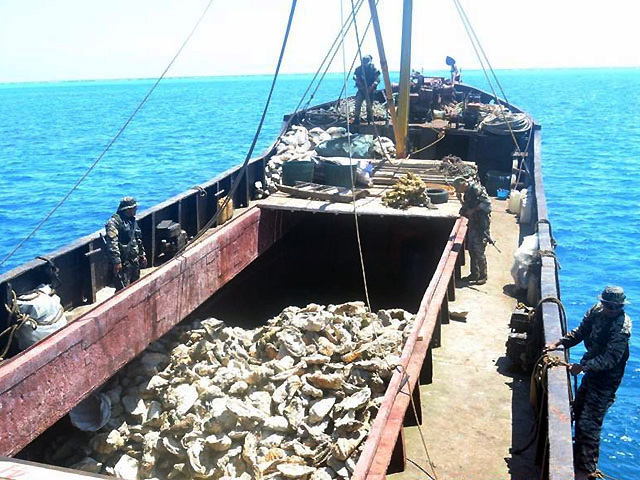Filtered By: Opinion
Opinion
PHL-China relations in 2014: How to navigate the West Philippine Sea disputes
The year 2013 was, by all means, a challenging period for Philippine-China relations. Despite earlier hopes that a new Chinese administration, under President Xi Jinping, would positively change the complexion of bilateral relations, we have instead seen an escalation in maritime tensions in the West Philippine Sea.

Richard Heydarian
After decades of latent territorial jostling in the contested waters, we have truly entered a moment of precarious build-up in territorial tensions, which is threatening freedom of navigation and maritime security in one of the most crucial arteries of regional and global trade. Moreover, with China challenging our claim to maritime features well within the Philippines’ 200-nautical-mile Exclusive Economic Zone (EEZ), we are grappling with a potential affront to our territorial integrity.
Increased assertiveness
For critics of China, what we see today is a new administration, which is even less compromising than its predecessors, especially over a string of territorial disputes across the whole Western Pacific.
Unlike his predecessors, namely President Hu Jintao and Jiang Zemin, Xi has managed to swiftly consolidate his control over all the important pillars of the Chinese political system: the Chinese Communist Party, the military, and the state bureaucracy. President Xi’s impressive rise to power was immediately followed by an unprecedented effort to streamline China’s maritime security agencies in mid-2013, with the National Oceanic Administration (NOA) agency tasked with overseeing the territorial disputes in China’s adjacent waters. This, critics claim, has allowed China to establish a more efficient and vigorous enforcement of its territorial claims in the West Philippine Sea, including increased maritime patrols by Chinese military and para-military forces in the vicinity of the Scarborough Shoal (Panatag) as well as the Second Thomas Shoal (Ayungin).
In November, Xi established an overarching decision-making body, the State Security Committee (SSC), allowing him to personally direct and supervise China’s foreign affairs as well as national security policy. Shortly after, China unilaterally imposed an Air Identification Defense Zone (ADIZ), covering maritime features claimed by both South Korea (leodo/Suyan Reef) and Japan (Senkaky/Diaoyu Islands) in the East China Sea. To up the ante, China announced that it will "adopt defensive emergency measures” to enforce its new regulation, and consider imposing a similar measure in the South China Sea in the future.
Naturally, Southeast Asian states such as the Philippines have been alarmed by these developments, forcing us to further intensify our defense and strategic ties with Japan and the U.S. But this pessimistic portrayal of maritime tensions in the West Philippine Sea tends to obscure decades of stable, promising bilateral relations – especially with China emerging as among our most important trade and investment partners.
The way forward
As much as we would want to evoke principles of international law to condemn China’s perceived “bullying” behavior, it must be noted that foreign affairs is also about employing the best tactics, which allow us to manage tensions, re-build ties, and envision a future marked by cooperation rather than conflict.
But how do we get there?

Members of a PHL Navy team inspect piles of giant clams found in one of two Chinese fishing vessels at Panatag or Scarborough Shoal on Tuesday. The incident has sparked tension between the PHL and Chinese governments. (Photo: Nolcom)
While there are hardly any guarantees in the Darwinian world of international relations, there are at least five inter-related principles that should guide our strategy towards China and the West Philippine Sea in the year ahead.
1. Build your own capacity
We should accept the fact that we are paying the price of neglecting our armed forces for decades. At this point, the Philippines is yet to possess a minimum deterrence capability. Thus, the priority of the government should be the rapid modernization of Philippine Navy, Airforce, and Coast Guard. Beyond increasing our defense budget, eliminating corruption in military acquisitions is a major obstacle that we should overcome.
2. Adopt diplomatic finesse
A major component of any successful diplomatic effort is the ability of disputing parties to suppress mutually-antagonizing rhetoric and maintain a level of subtlety in bilateral engagements. While it might make sense to seek the help of external powers to partially remedy the power asymmetry in Philippine-China relations, explicitly calling for more foreign military assistance also strengthens the hands of hawkish elements, which call for confrontation and escalation.
3. Reach out to the moderates
The Chinese leadership is not a monolithic lot, for there are both moderate as well as hawkish tendencies within the top leadership. As much as we should oppose Beijing’s claims to “indisputable” and “inherent” sovereignty over features in the West Philippine Sea, we should also bear in mind that China wants to be seen as a responsible actor in East Asia.
4. See the bigger picture
You can choose your friends, but not your neighbors. China and its inexorable rise as the preeminent power in East Asia is a reality that we can’t deny, hence engagement and mutual-accommodation is unavoidable. With China emerging as a global economic superpower, it will be a crucial source of trade, investments, and technology for developing countries like the Philippines.
5. Consider joint-development
Based on my conversations with varying government officials, diplomats, and journalists across the region, China, as late as 2011, was willing to consider to temporarily shelving aside sovereignty issues in order to facilitate joint-development in the contested territories. Given the rise of popular nationalism in China, and the leadership’s desperation for maintaining political legitimacy, it is almost impossible to expect Beijing to drop its maritime claims. But the negotiation of a transparent, mutually-satisfying joint-development scheme over some contested territories is conceivable. — KDM, GMA News
Richard Javad Heydarian is a lecturer in international affairs at Ateneo De Manila University, and a columnist at Asia Times and Huffington Post. He has been a regular commentator and speaker on South China Sea disputes in varying fora in the Philippines and the Asia-Pacific region.
More Videos
Most Popular



